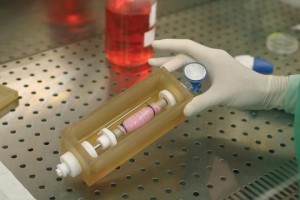
As promised we’re back with more on the apparatus of Harvard Apparatus. In our last blog we talked about the mechanical syringe pump and the Ex Vivo Profusion System, but now we’re looking into the bioreactors used by researchers to advance their abilities to create synthetic organs in the future.
Once they discovered that their technologies could be used to regenerate organs, Harvard Apparatus began research and development into the ways to improve the bioreactors for regenerative medicine. They started to develop bioreactors in all different sizes and shapes for each organ. For example, there have been all different shapes of tracheas needed for transplantation and Harvard Apparatus has been able to create bioreactors that can accommodate individual trachea.
The InBreath™ Bioreactor goes inside of an incubator to maintain a sterile field in an environment required to help to grow the organ. Also, the InBreath™ Bioreactor enables the stem cells that are growing to be stimulated in a manner similar to that in the body. Inside of the bioreactor, the cells are exposed to both a liquid environment that resembles the mucous that the trachea is exposed to and the air environment that as a windpipe the trachea would experience. This helps the stem cells to grow and differentiate into the correct type of cells by stimulating them.
But how do you know when an organ is ready? Harvard Apparatus thought about this too. There is no alternative to the experience of a world leading surgeon. They supplement this with the ability to measure certain metrics of the physiology of organs. The surgeon can manipulate the trachea and monitor the metrics and decide when the organ is ready to be transplanted.
But that’s all for now, check back next time for more about the technologies brought to us by Harvard Apparatus. Let us know what you think so far @TRA360!
